Unit Synopsis
By the end of the Talk For Reading (T4R) unit of A Family is a Family is a Family, children may be able to:
- Compare the similarities and differences between family settings.
- Recognise that families come in various forms beyond the traditional structure.
- Justify their opinions by making personal connections and references to the text.
- Identify key elements, such as love and care, that define a family.
- Talk about their favourite family activities and how their family members show care for one another.
Reading Skill Focus
- Responding to literature
- Interacting with others
- Predicting
- Connecting (text-to-self and text-to-text)
- Summarising
Reading Strategies
- Discussion
- Dialogic reading
- Read along
- Book review
Supporting Texts
- Love Makes a Family by Sophie Beer



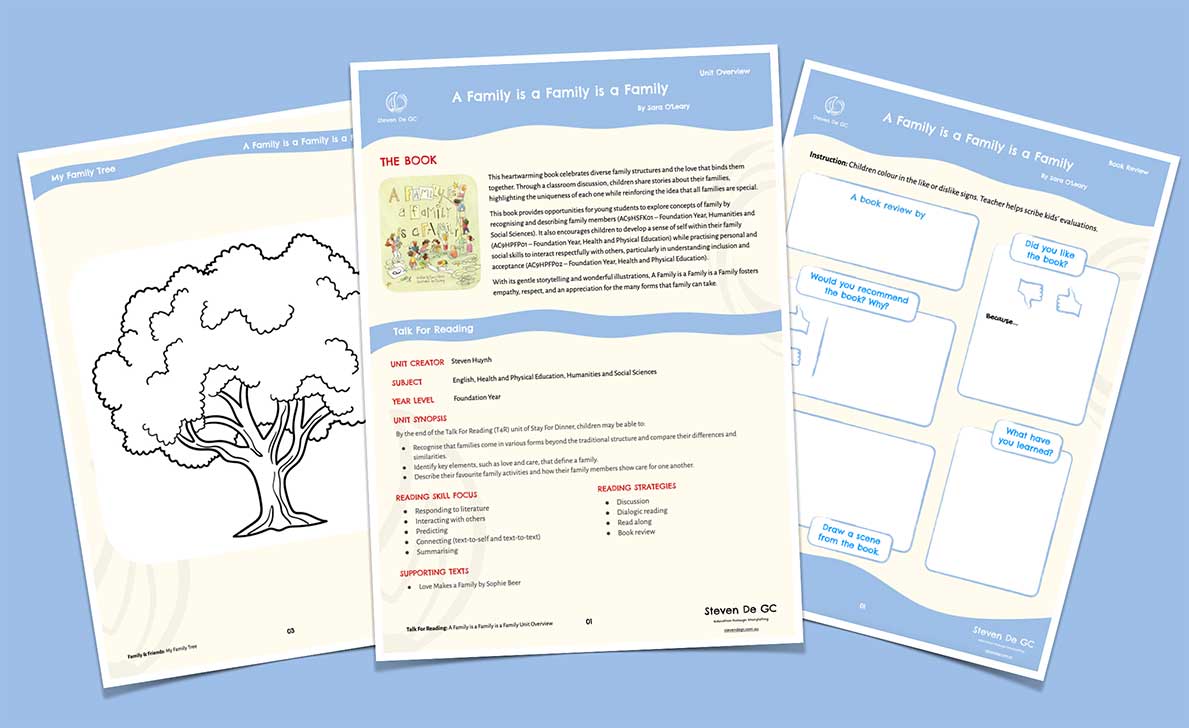
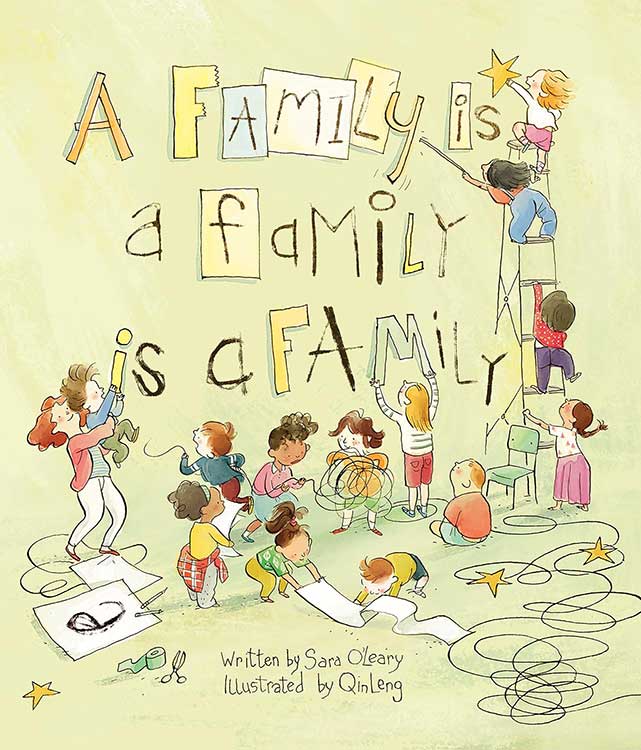
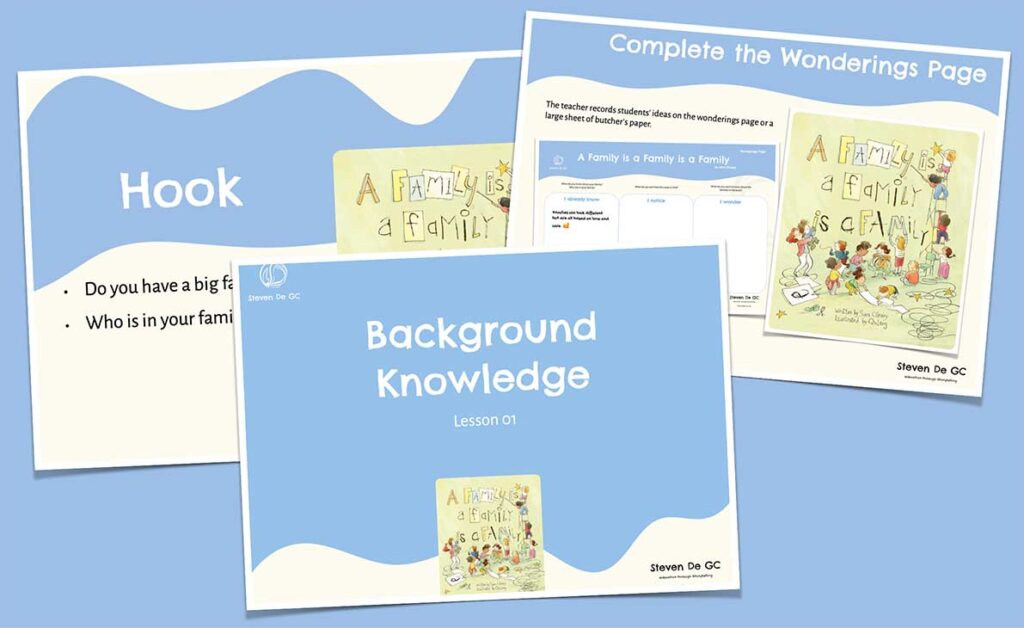
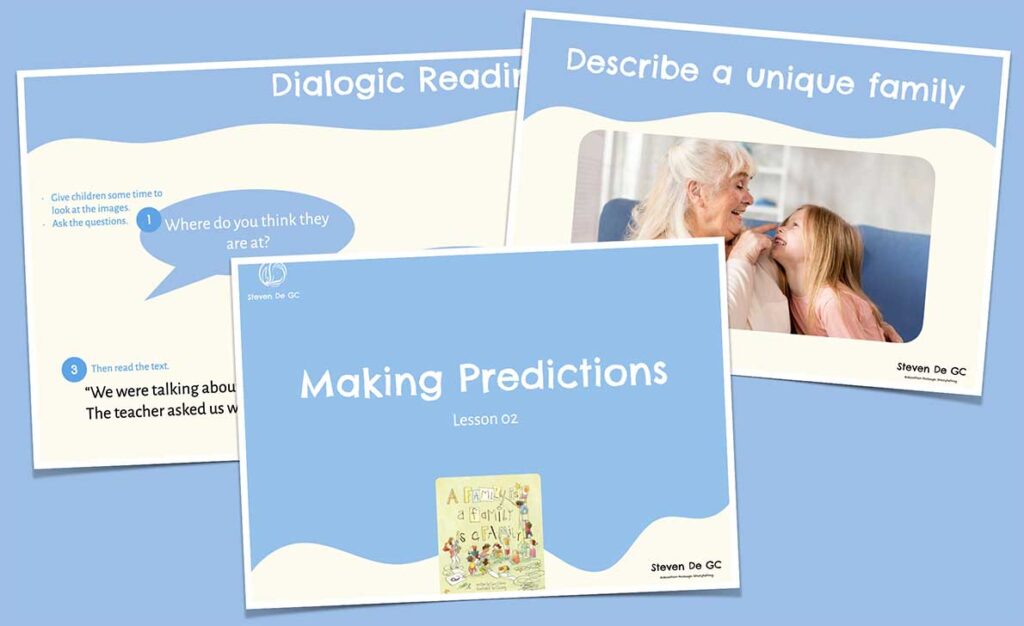


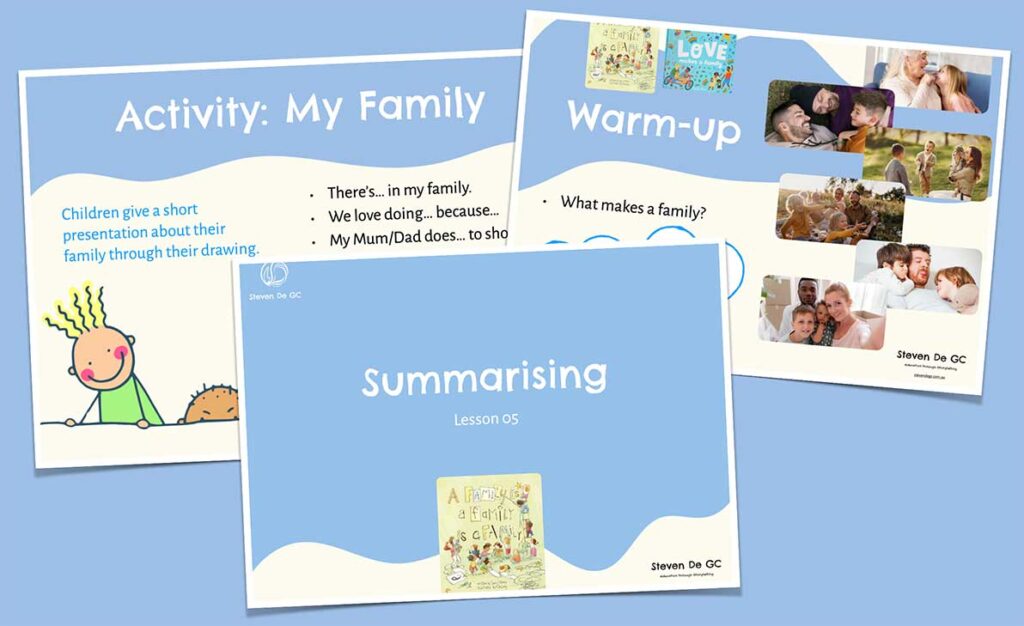
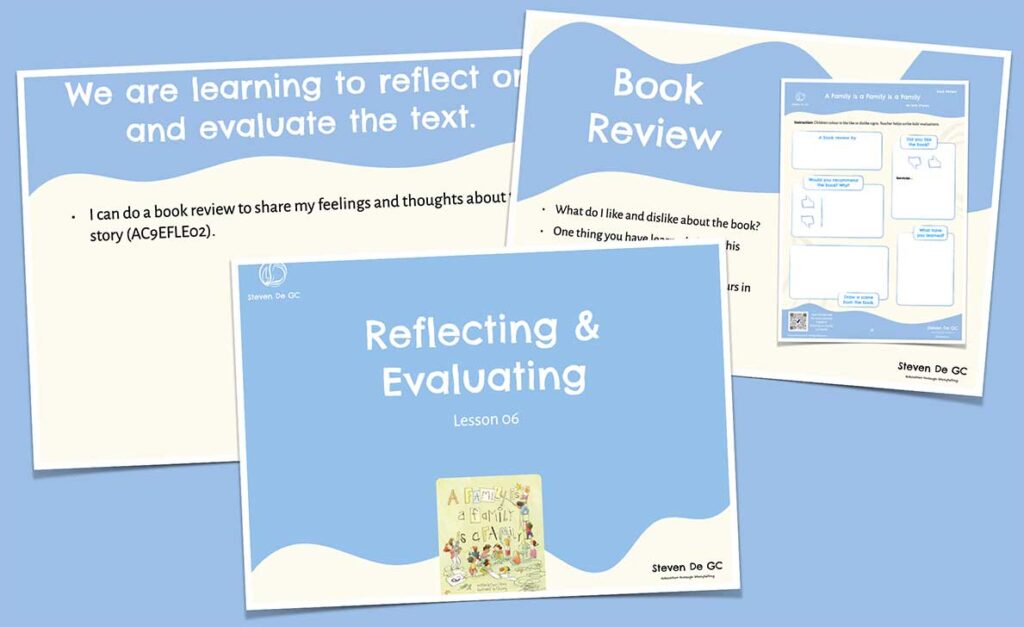
![[T4R] The Shouting Girl Reading/Health Unit for Year 2 [T4R] The Shouting Girl Reading/Health Unit for Year 2](https://stevendegc.com.au/wp-content/uploads/2025/07/T4R-TheShoutingGirl-UnitOverview-Cover-1024x627.jpg)
![[T4R] Let’s Build a Boat Reading/Design Unit for Year 1/2 [T4R] Let’s Build a Boat Reading/Design Unit for Year 1/2](https://stevendegc.com.au/wp-content/uploads/2025/05/LetsBuildaBoat-T4R-Overview-Cover-1024x626.jpg)
![[T4R] Stay For Dinner Reading Unit for Year 2 [T4R] Stay For Dinner Reading Unit for Year 2](https://stevendegc.com.au/wp-content/uploads/2025/02/T4R-Stay-For-Dinner-UnitOverviewCover-1024x627.jpg)
Leave a Reply